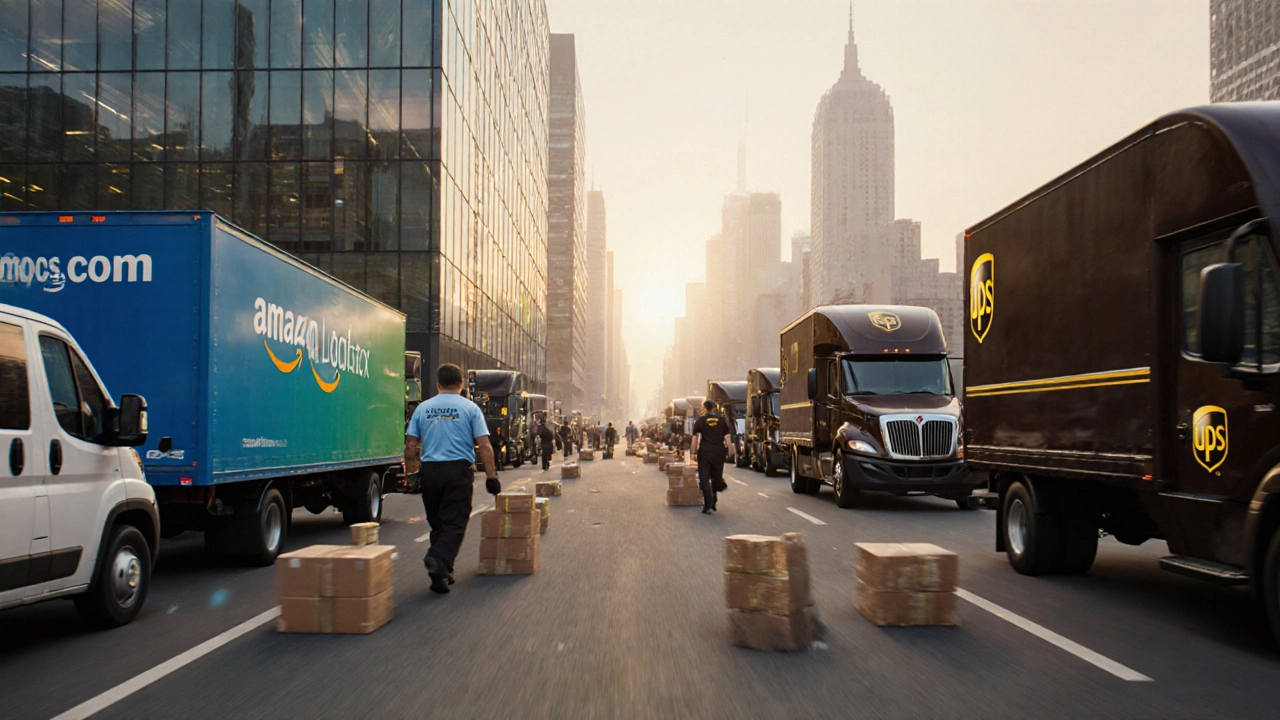Amazon Logistics vs UPS: Who Has the Bigger Network?
Compare Amazon Logistics and UPS across revenue, package volume, fleet, air cargo, and global reach to see which logistics giant is larger.
When talking about fulfillment centers, dedicated facilities that receive, store, pick, pack, and ship products for businesses. Also known as order fulfillment hubs, they act as the bridge between inventory and the customer’s front door. A modern fulfillment center usually runs on a warehouse management system, software that coordinates storage locations, picking routes, and shipment schedules and relies on precise inventory management, processes that track stock levels in real time to avoid stock‑outs or overstock. This combo enables the center to fulfill orders quickly and accurately.
Not every warehouse works the same way. A pure storage warehouse focuses on holding bulk goods with minimal movement, while a distribution center, facility designed to quickly sort and redirect products to retailers or end‑customers emphasizes rapid turnover and cross‑docking. Fulfillment centers fall somewhere in the middle: they keep enough stock on hand to pick individual orders but also need fast outbound flows, just like a distribution hub. Understanding these nuances helps businesses pick the right partner for their supply chain.
Today's e‑logistics landscape blurs the lines between online ordering and physical movement. When a shopper clicks “Buy,” the order travels through an e‑commerce platform, lands in the fulfillment center’s order‑management system, and triggers a pick‑list. This digital handoff is what we call e‑logistics, a term that captures all the electronic coordination of shipping, tracking, and delivery. By integrating e‑logistics with a WMS, fulfillment centers can automate label printing, update customers with real‑time tracking, and reduce manual errors.
Once the package leaves the fulfillment floor, the last‑mile challenge begins. Couriers like FedEx, UPS, or local delivery services take over, and their ability to offer door‑to‑door service depends on the accuracy of the fulfillment data. A well‑managed center provides exact dimensions, weight, and address info, which helps courier pricing algorithms calculate the cheapest and fastest route. This synergy between fulfillment centers and courier networks is why many businesses see cost savings of up to 15% on shipping.
Software doesn’t stop at the WMS. Shipping tools such as UPS WorldShip or multi‑carrier platforms process bulk label batches, compare rates, and even suggest the best carrier for each package. When a fulfillment center feeds these tools with clean order data, the shipping step becomes almost hands‑free. The result is faster dispatch, fewer missed cut‑off times, and happier customers who receive their orders on schedule.
Facility costs also play a big role. In 2025 the average U.S. warehouse rent hovered around $7‑$9 per square foot, with premium locations in metro areas costing significantly more. Fulfillment centers balance rent against proximity to major highways and urban demand zones. By situating a center near a city’s “last‑mile corridor,” companies can shave hours off delivery times while keeping lease expenses reasonable.
People power the whole operation. Warehouse managers juggle staffing schedules, safety protocols, and performance metrics. Stress levels can rise when order volumes spike, but seasoned managers rely on real‑time dashboards, clear SOPs, and cross‑trained teams to stay calm. A well‑run fulfillment center turns pressure into productivity, delivering consistent service even during peak seasons like holidays or flash sales.
All these pieces—warehouse types, WMS, inventory control, e‑logistics, shipping software, rent considerations, and staff management—form the ecosystem that makes a fulfillment center tick. Below you’ll find a curated set of articles that dive deeper into each of these areas, offering actionable tips, cost‑saving strategies, and real‑world examples you can apply right away.

Compare Amazon Logistics and UPS across revenue, package volume, fleet, air cargo, and global reach to see which logistics giant is larger.